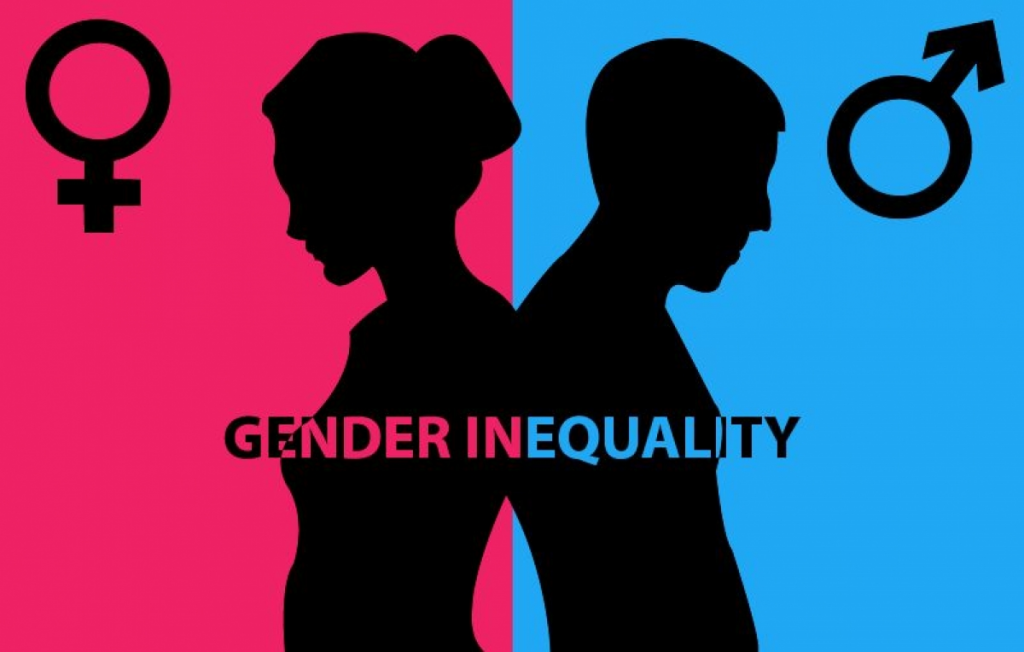
Even though gender inequality was worse many, many years ago, it is still a problem in the UK, especially in the work place. There is inequality like pay, women not succeeding in their career path as much as men, and more, due to things like caring responsibilities for their family.
For more on gender inequality, click here!
For more articles like this one to help you study, click here!
Table of Contents
Gender pay gap- gender inequality
The gender pay gap is a huge issue in Scotland. Many men get paid more than women for similar types of jobs. For full time jobs, the gap is 9% and for part time jobs the gap is 24%.
For every pound that a man makes working part time, a woman will earn 65p, and for every pound a man earns working full time, a woman will make 83p. It has been calculated that over a lifetime, women will earn around £300,000 less than men. It has been said that it will be several decades before this is fixed, around 65 years until the full time pay gap is closed and 125 years until the part time pay gap is filled.
As women earn much less, they are less likely to receive a full pension. Women are also less likely to set up a private pension as only 51% of women have one, compared to 69% of men. The reason for this is that women are a lot more likely to suffer in poverty than men. As the percentage of single mothers has risen by 15% more and more women are suffering from financial difficulty. Also since the male in the family is more likely to do the top jobs, so women are then more likely to do part-time, lower paid jobs to top up the males’ salary.
Harsh working environment- gender inequality
Women need to work in harsh working environments often. Many women suffer sexism and discrimination in the workplace and out. Women are more likely to suffer sexual abuse, domestic abuse, however this does not mean it does not happen to men also.
Women are also more likely to be discriminated against for promotion, for example “men’s work” and not being offered overtime as it is assumed they would have house duties like cooking, cleaning and looking after their children. Women are also more likely to be sacked, not given an updated contract, not hired due to ‘obstacles’ like becoming pregnant.
Recent allegations in the media about sexual harassment and assault in the entertainment industry shows that men will abuse their positions of power, to sexually harass, assault and abuse women.
Women in job inequality- gender inequality

Women in our society suffer gender inequality in terms of jobs. Women are more likely to do lower paid part time jobs as they have other responsibilities like raising their children and taking care of their family. As women are becoming more and more independent and likely to work full time careers, they now play a crucial role in our economy and has become a very important part of the family finances, especially those with children.
Now 70% of women are working compared to 79% of men. Although this gap is considered small, women are more likely to work part time and in lower paid jobs, and generally paid less overall. Women tend to work in one of the 5 C’s, these jobs are lower paying jobs, less hours as they need to be at home more than the male to raise the families.
The 5 C’s are clerical, cleaning, cashiering, catering and caring. This also emphasises the gender pay gap and the “glass ceiling effect” as women have other, more important responsibilities. This also explains these other effects as women may not want the responsibility of being top position at a job and also may want to work at home so they can keep an eye on the children.
17% of women believe the ‘glass ceiling effect’ is because they are classed as the main caretaker in the family and therefore need less hours, more breaks ,and this prevents barriers from reaching the top of their occupation. Also after a long period out of work for maternity leave, women face social barriers returning to the workplace such as low confidence and they may be behind on their skill level after not doing their job for a while.
Overall, a woman’s lifestyle and upbringing or nature may limit them to part-time low paid jobs in the 5 C’s, so this is obviously going to impact and create a Gender pay Gap and gender inequality as men do not take on these types of jobs or responsibilities in the same way which women do.
”Glass ceiling effect”- gender inequality

A final piece of evidence of gender inequality in women in the workplace is that and it can be difficult for women to access male-dominated networks and top jobs. Some women find it very difficult to break through the ‘glass ceiling’ This phrase is used to describe the barrier women face when they are seeking a promotion or want to progress through their career. Women are underrepresented in the areas of business, law and politics.
Many of these top jobs are dominated by men, for example 93% of chief executives of Britain’s top 100 companies are men, and women find it difficult to succeed to this position. In politics, only 26% of MP’s are women, however there is progress being made as the Scottish Parliament has the 4th highest level of female representation in the world. world. For example, Nicola Sturgeon, Ruth Davidson and Kezia Dugdale have all held senior positions within the Scottish Parliament. Within the current Conservative Government, only 26% of Cabinet Ministers are women. This means that women are under-represented as it should be 50/50.
This shows some political parties are more represented than others yet when it comes to all parties women are underrepresented. On the other hand, in Scotland, 50% of SNP’s shadow cabinet members are women. This shows Scotland are trying their best to reduce gender inequalities as they have an equal cabinet. Women also tend to be progressing and breaking through the glass ceiling, which shows they are making progress and beginning to break through the glass ceiling. The chief executive of Yahoo is a woman for Facebook, beneath Mark Zukerberg is Sheryl Sandberg who is the chief operator.
However, when it comes to the senior roles in Facebook only 17% are women and 83% are men. 10% of those with senior roles in twitter are women. In the top 100 companies in Britain, it was discovered that only 7% of chief executives were women.
Nevertheless women are making excellent progress in gender inequality, particular in jobs like medicine and healthcare as 59% of NHS workers are female. 60% of British doctors and 30% of consultants are also female. In addition to female success, 58% of teachers are women. Overall, this shows that although women are making progress to break through the ‘Glass Ceiling’, it could be argued that women are limited to the 5 C’s as these are the areas where women are over-represented.
